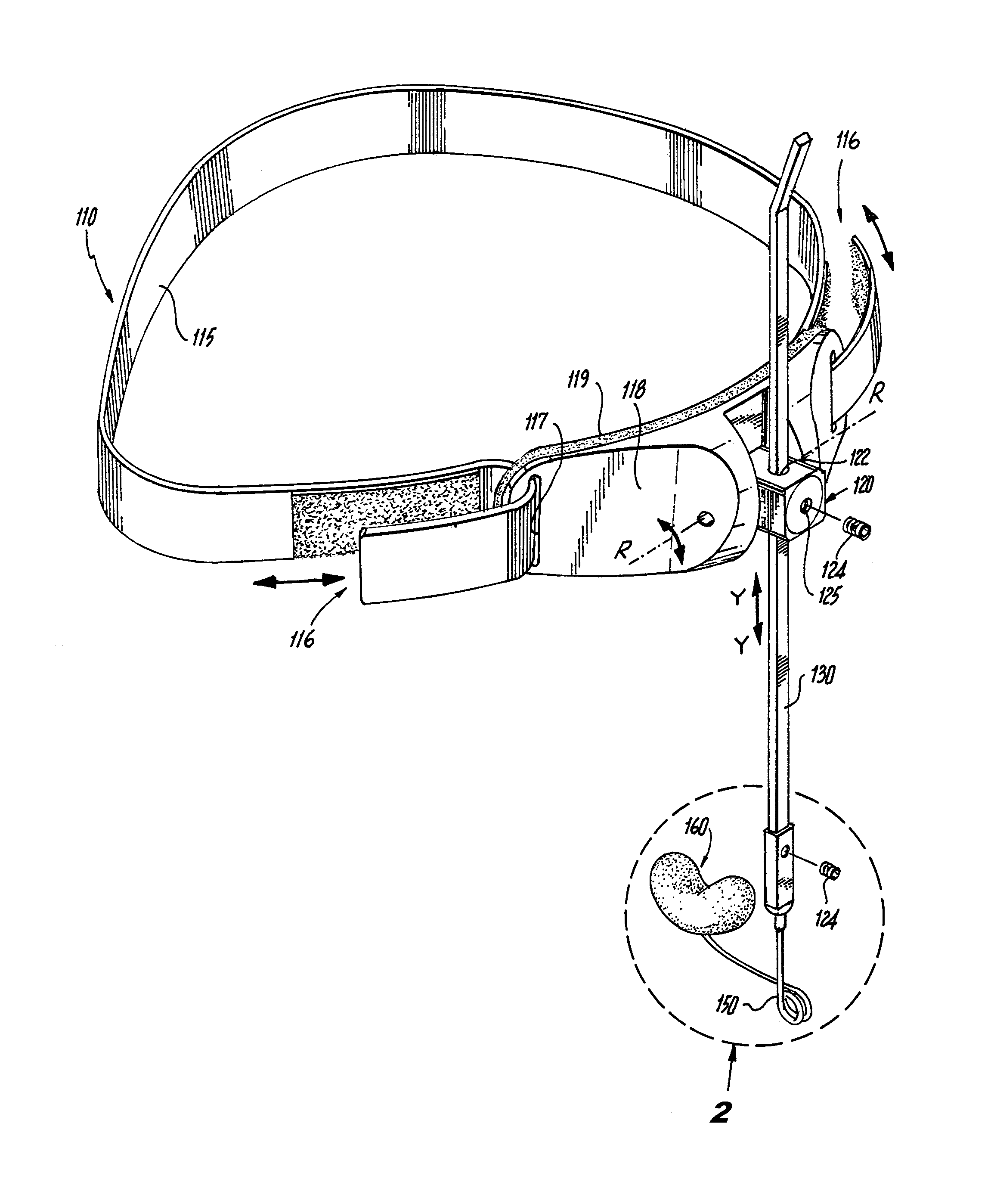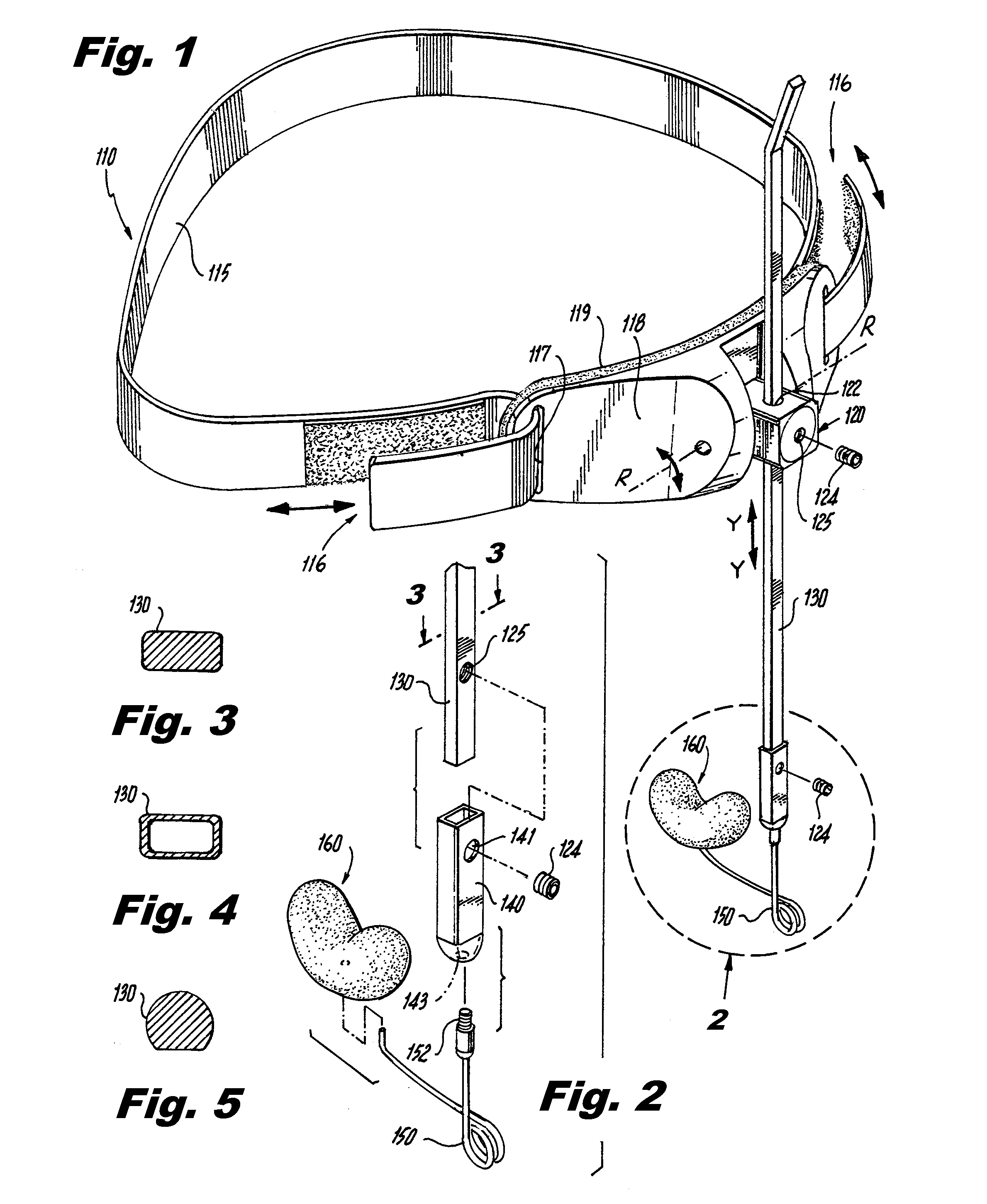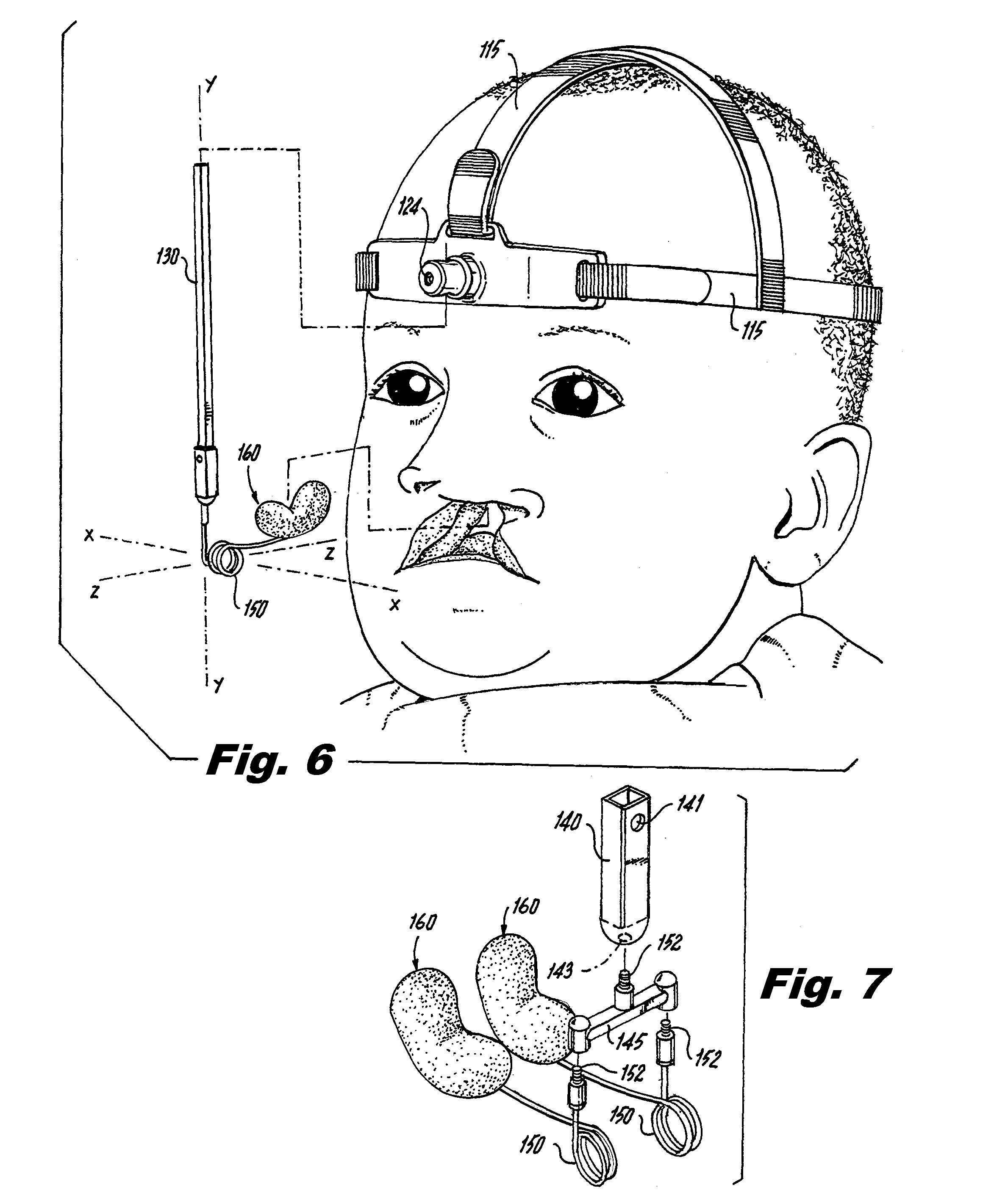Extraoral nasal molding headgear device for the treatment of cleft lip and palate
a technology of lip and palate and nasal molding, which is applied in the field of orthodontics and orthopedics, can solve the problems of difficult to find trained clinicians, time-consuming procedures, and sensitive techniques, and achieves the effects of reducing the risk of infection, and improving the quality of li
- Summary
- Abstract
- Description
- Claims
- Application Information
AI Technical Summary
Benefits of technology
Problems solved by technology
Method used
Image
Examples
Embodiment Construction
[0032]Referring to the Figures, the invention consists of a fastener 110 for securing the appliance / device to the head 111 of an infant, preferably around the circumference of the head 111. The fastener 110 is adjustable in size and it is also removable. For example, an elastic head band can be used as a fastener. More preferably, the fastener 110 comprises a non-elastic, adjustable band 115 that more securely attaches to the head 111 of the infant. A non-elastic fabric band 115 with a fastening means, e.g., buttons, hook and loop material (Velcro) 116, etc., can be used. As shown in the Figures, the band 115 may loop through a slot 117 in a front connector 118 which includes a pad 119. Other fasteners can include hats that cover the head of the infant, a fabric band that circumscribes the head of the infant with one or more straps connecting portions of the band on opposite sides of the head and transversing over the top of the head as shown in FIGS. 6, 8, and 10, as well as other ...
PUM
 Login to View More
Login to View More Abstract
Description
Claims
Application Information
 Login to View More
Login to View More - R&D
- Intellectual Property
- Life Sciences
- Materials
- Tech Scout
- Unparalleled Data Quality
- Higher Quality Content
- 60% Fewer Hallucinations
Browse by: Latest US Patents, China's latest patents, Technical Efficacy Thesaurus, Application Domain, Technology Topic, Popular Technical Reports.
© 2025 PatSnap. All rights reserved.Legal|Privacy policy|Modern Slavery Act Transparency Statement|Sitemap|About US| Contact US: help@patsnap.com



